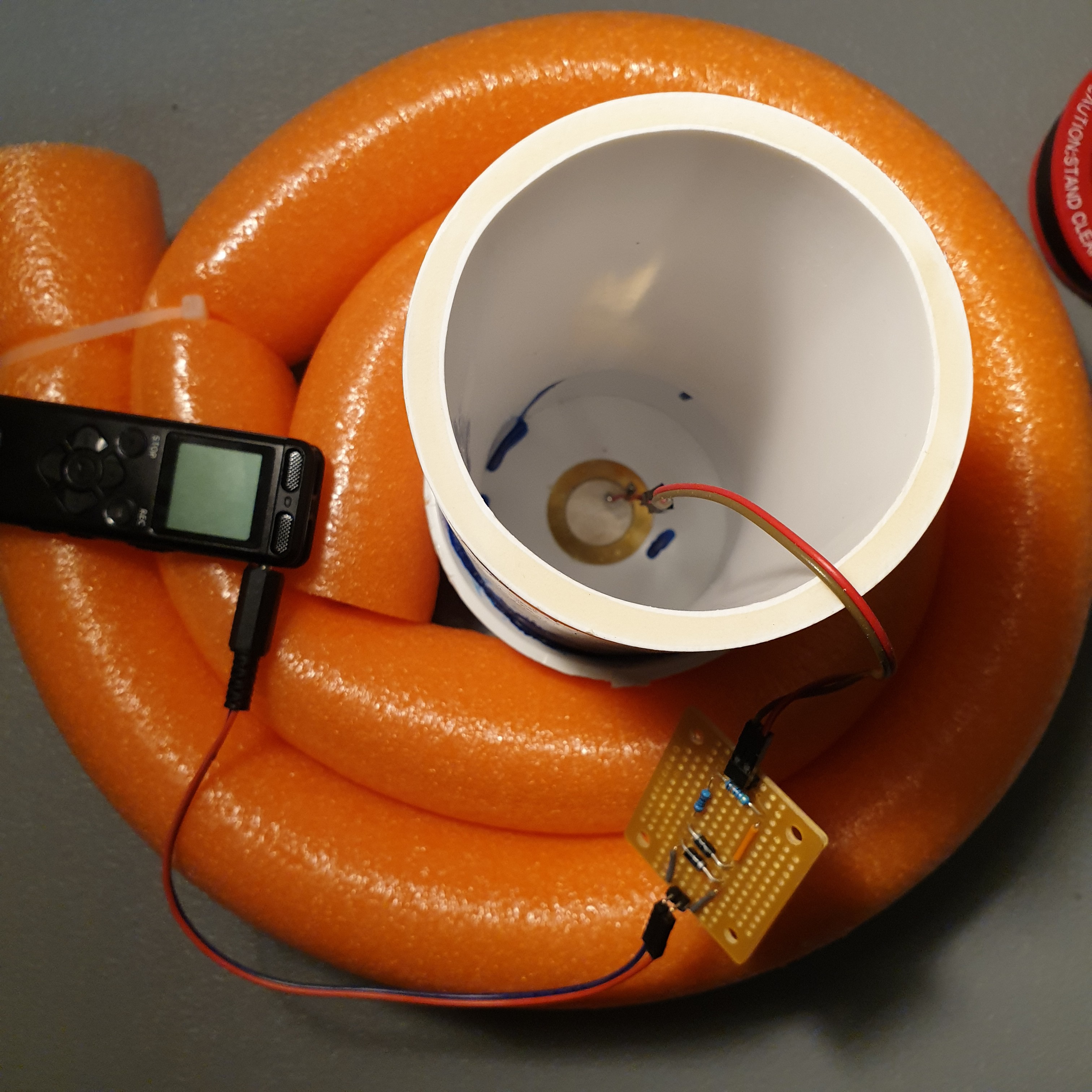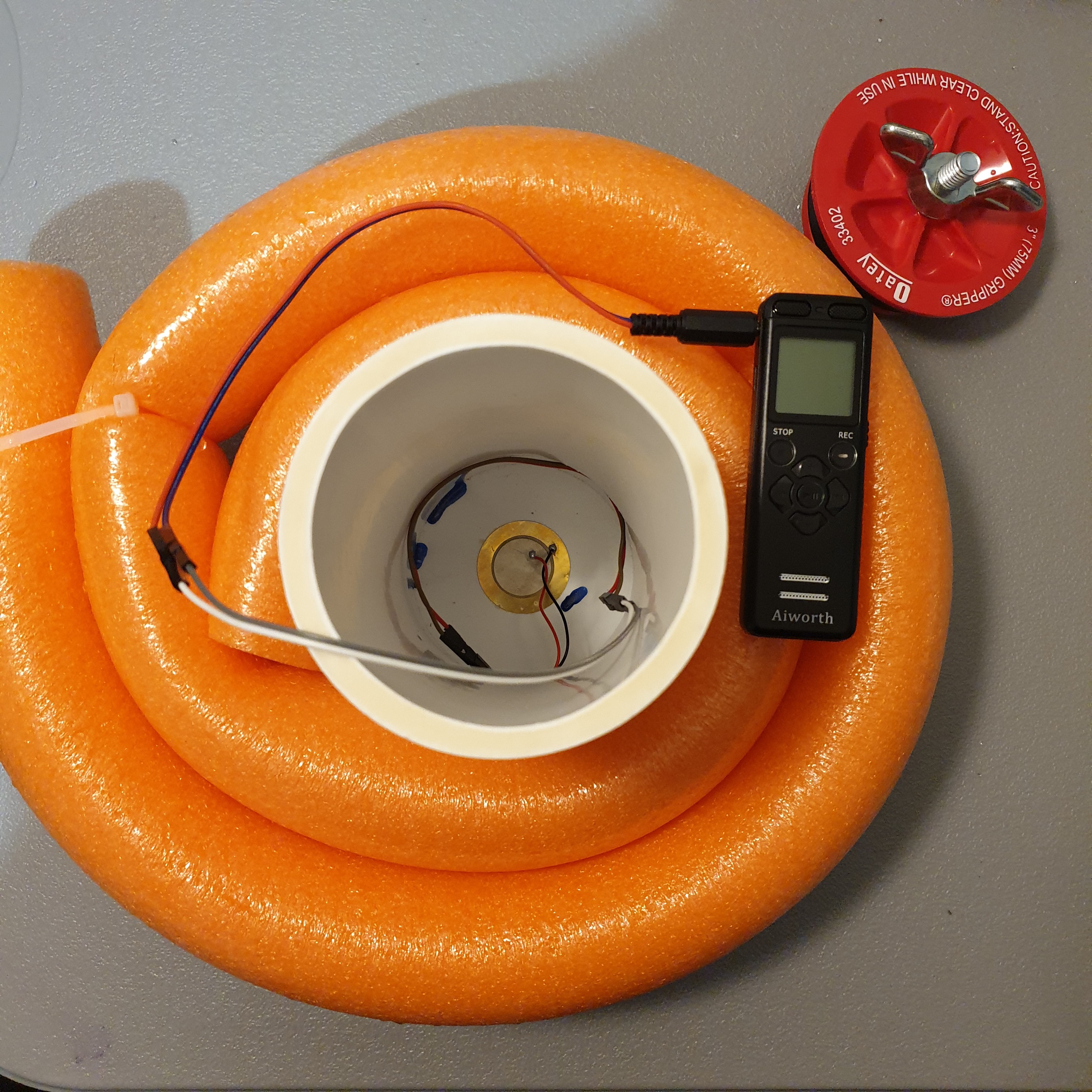
I assembled the BoatDetect proof-of-concept prototype today and performed a few audio tests in my bathtub.
The enclosure is a pool noodle wrapped around off-the-shelf 3in PVC fittings and pipe. A piezo diaphragm is super glued to the inside surface of an end cap fitting. As a leak check, I left the enclosure in the bathtub for about an hour. A the end of the hour I did not find moisture on the inside of the enclosure. So at this point I am confident that the PVC glue joints are watertight.
I then ran two qualitative audio tests with and without a parallel resistor and diode limiter on the piezo diaphragm output signal. During the tests I used two approximate high and low intensity sounds in the water to confirm that the microphone output signal was sufficient to be picked up by the recorder. I created the high intensity sound by hitting two rocks together. And the low intensity by slashing the water with my hand.


It was easier to hear the quieter splashing sounds on the recording playback without the parallel resistor and diode limiter installed.
Next step is to make a few small enhancements to the prototype to make it easier to use out on the lake. I am very much looking forward to capturing some real boat motor audio with this device and analyzing the data to understanding what boat motor audio signature could be reliable for boat detection.
In parallel with getting this device out on the lake, I am looking into a method to generate sound at known frequencies and power levels for an evaluation of the piezo microphone sensitivity. Then back to the lab ("cough cough bathtub") to perform this testing.
 John Opsahl
John Opsahl
Discussions
Become a Hackaday.io Member
Create an account to leave a comment. Already have an account? Log In.